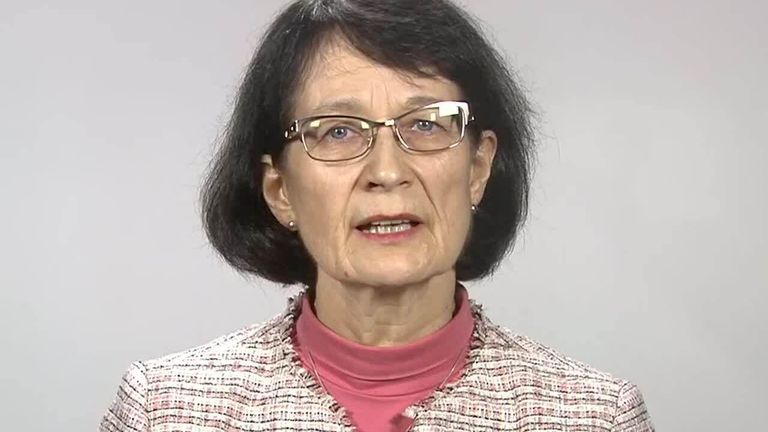Coronavirus: Evidence shows children are safe from COVID-19 at school - but the research comes with a caveat
The research into children and coronavirus is reassuring, writes Sky's science correspondent Thomas Moore.
Monday 24 August 2020 12:31, UK
In little more than a week, almost 10 million children in England, Wales and Northern Ireland will return to school, many for the first time since March.
Schools in Scotland are already back.
While the benefits are beyond doubt, it is the risks to children and staff that have been keenly contested.
In fact, there is overwhelming evidence that the risk of coronavirus to children is tiny.
According to the World Health Organisation, just 1-3% of all cases globally have been in children and adolescents, yet they account for 29% of the population.
Here in the UK, the deputy chief medical officer, Dr Jenny Harries, told Sky News children were more likely to die in a car accident than they were from COVID-19.
Statistics from the Winton Centre for Risk and Evidence Communication at the University of Cambridge confirm she is right.
Its data shows that in the 16 weeks up to the end of July, there had been 15 deaths from COVID-19 in those aged under-19 in the UK.
But over the same time period in a typical year, 44 children and adolescents would die in a car accident and 29 would die from "homicide or probable homicide".
And in an average year, 28 would die from flu in a 16-week period. So the relative risk of COVID-19 is small.
The research by Public Health England (PHE) of schools that returned for a mini-term in June is also reassuring.
There were just 30 outbreaks involving 70 children and 128 staff, largely in areas where community transmission of the virus was higher, although an outbreak has since been reported at a school in Dundee involving 17 staff and two pupils.
But of the 30 outbreaks, the analysis shows that there was transmission between students in only two of them.
So, what about the risk to adults? Pupils passed the virus on to a member of staff in six of the outbreaks.
But that was slightly less than the risk of a member of staff infecting students - and the greatest risk of all was staff infecting each other, accounting for 15 of the outbreaks.
PHE concludes that it is the adults who need to be more aware of infection control, particularly in staff rooms, when covering for each other in classrooms and when outside school.
There is a caveat to PHE's research - not many secondary schools returned in June and the science shows viral transmission increases with age.
In Germany, older school children wear masks when moving from class to class, but not while sitting socially distanced at their desks.
Here in the UK, children over the age of 11 have to wear a mask on public transport and in shops unless they have a good reason not to. But they do not have to wear them in school.
The government and its advisers argue that is because they are not mixing with strangers; their classmates are in the same social bubble so the risks, even indoors, are lower.
The new term will feel very different for pupils and staff. New rules to follow, new behaviours to enforce, including good hand hygiene, desks all facing the front and limits on how much children mix with other classes.
PHE will continue to monitor outbreaks in schools and it may well be that advice to teachers evolves in step with the understanding of the virus.
But so far the research in the UK and elsewhere is reassuring. The risk of spreading the virus seems to be higher outside school than inside the classroom.








